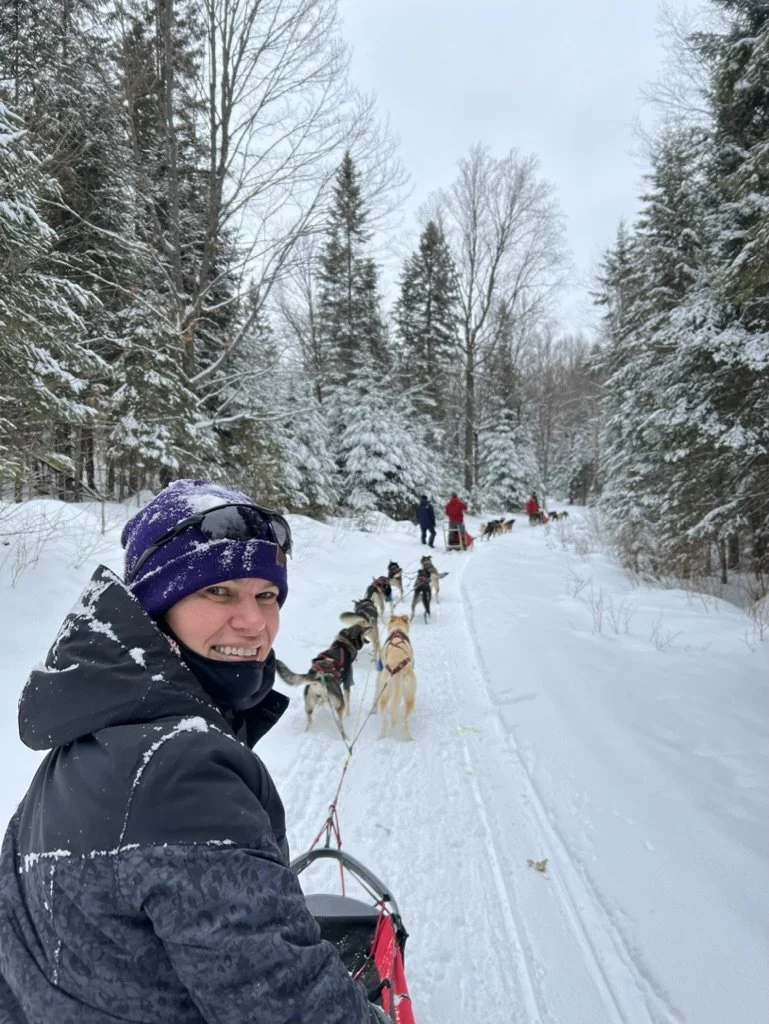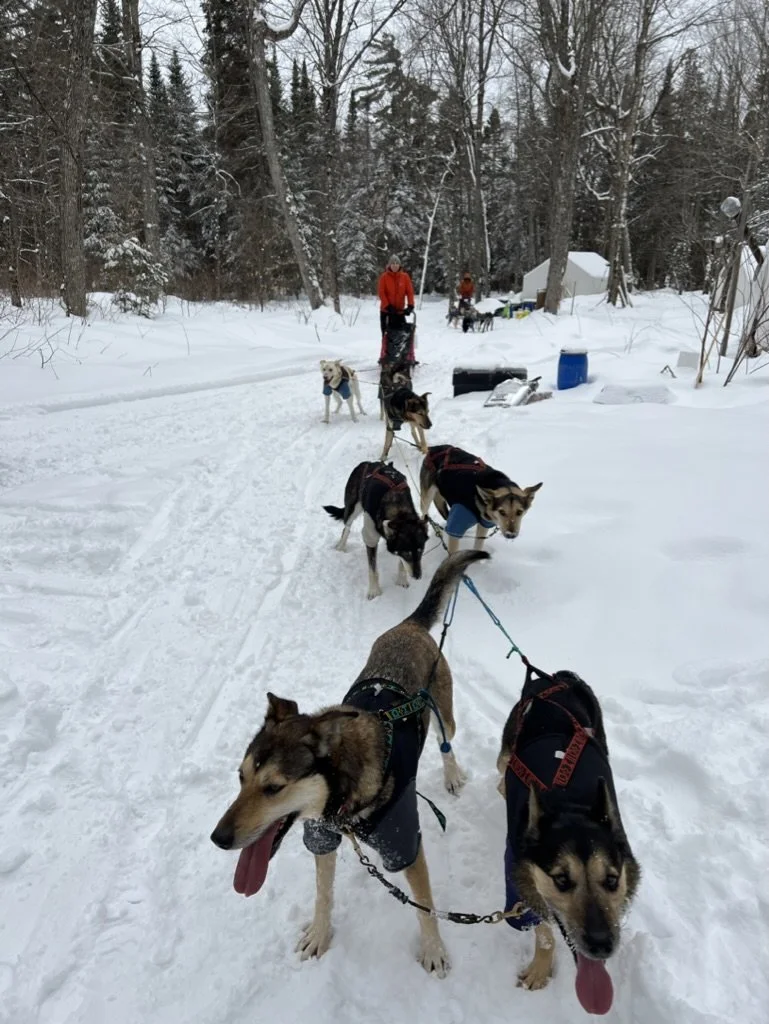What A Dog Team Taught Me About Leadership
“Haw!” I yelled from the sled as Leo and Eiffel, my lead dogs, decided to hang a right, instead of a left at the fork on the trail.
Leo pressed his shoulder into Eiffel in an attempt to go right, while Eiffel did her best to follow my left turn command.
“Leo, HAW!” I yelled it louder this time and with more conviction, as I stood hard on the break with 2 feet, the sled still sliding slowly forward.
Leo finally listened and with Eiffel’s persistence we began heading to the right direction.
We’d just set off from camp for a trail run and the team was flying high on adrenaline and pure excitement, so much so, they were struggling to stay focused and heed my directions. The thing is, it’s not only incredibly hard to turn a sled team around, it’s dangerous and liable for injury; so it was essential that I got them going in the right direction.
This past weekend I experienced the absolute joy of winter camping and dog sledding in Algonquin Park here in Ontario with Snow Forest Adventures. I couldn’t help but walk away with a few lessons on leadership, especially in times of change - here’s what I learned:
Lesson # 1: Know your team
After setting up camp the first night I began making my rounds with the team. Some of the dogs were super calm and cuddly, whining for more attention as I moved to their peer. Others were so excited, they jumped up and down – on their house, off their house, back on again. Getting to know the dogs on my team meant they’d get to know me, trust me, and take me seriously when I directed them on the trail.
I’d also know their temperaments: who got along with who – this was imperative for hook up, because if I put the wrong dogs together all hell could break loose!
In the same way, knowing our people as we head into change is key to success. Think of your own team: Who get’s excited about change? Who’s resistant to change? Who likes the follow the rules? Who likes more flexibility? And how might those difference clash? What might need to be put in place to help address that potential conflict so that all voices are heard and the team is able to move forward?
Lesson # 2: Keep the gangline tight
The next day, as we breezed through the bush trail, we came around a bend and there was a sudden downhill I wasn’t anticipating. The gangline became loose and started bouncing off the snow.
Solo, who was running in the middle of the pack managed to step over it with one foot, leaving the line running between his back legs. I hit the brake fast, yelling “WOAH”. After securing the sled I got Solo sorted and we moved on.
The gangline goes down the middle of the team with each dog attached by their head and rear ropes. It needed to be kept tight at all times or else the dogs could become caught up. This meant having my foot lightly on the brake most of the trip to maintain our speed, especially on the downhills so the ling didn’t bunch up as the sled picked up speed.
As we move our teams through change there will be people biting at the bit to get going and others holding back. How are we helping to maintain consistency and transparency through our communication, requests, expectations, and support? How are we encouraging those who are stuck to move forward? How are we guiding those who may need to slow down? Are we watching the “gangline”, or our leadership behaviours, to make sure it’s not bunching and tripping our people up?
Lesson # 3: Push the sled up-hill
As we came over a ridge we hit a steep downhill into a valley, and I could see the hill to get out the other side was gigantic – long and steep.
As we approached the bottom, I jumped off the sled and start running in the snow to help push the sled up. I huffed and puffed as we ran, my heart pounding, legs aching as my winter boots sunk in the snow with each step, and the team pulling hard ahead of me. It had to be a team effort otherwise I’d tire out the dogs and in short time we’d be going nowhere as we nursed injuries and fatigue.
Change is hard work, and barking orders at our people without being willing to join them in that hard work is a recipe for failure. How are we “running up hill” with our team? Do they feel supported? Do they sense we’re in the thick of it with them? Are we clear on what they need from us, as their leader?
Lesson # 4: Stop to check in
We’d take breaks often to provide the teams with the rest they needed so they didn’t gas out. But they didn’t want the break – they’d bark and howl at the end of their lines to get going, often pulling the sled anchor out and lurching it forward. But we held them there anyways because we knew they needed it. We were encouraged to check in on the dogs and give affection and praise.
So often amid change, we barrel forward, wanting to maintain momentum, to get the job done. And while this may be effective, we run the risk of 1) burning our people out, 2) leaving people feeling unappreciated and unseen, and 3) missing vital opportunities to catch potential problems. Asking powerful, open-ended questions with a posture of curiosity, so we can learn more, is vital to avoiding avoidable errors. How do we make time to check in with our team? Do our people feel free to express concerns and insights that will help with the progress? What are we learning that we didn’t know before?
How we move our teams through change matters immensely, because if we do it poorly the change will inevitably fail. Increased turnover, low team morale, and increased mistakes that cost not only our teams, but the organization as a whole, are just a few examples. So, let’s take a few lessons from these wonderful dogs, who work successfully together, despite their differences, and do so with sheer joy and passion every time they get in front of a sled!
If you found this insightful please let me know by leaving a comment on the article on our Facebook , Instagram or LinkedIn pages.


